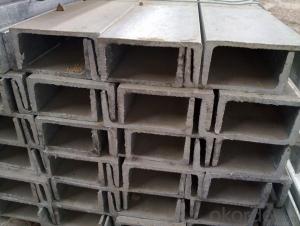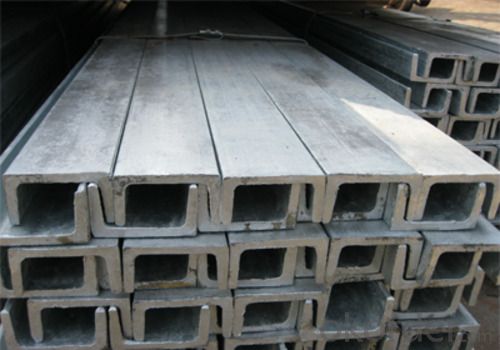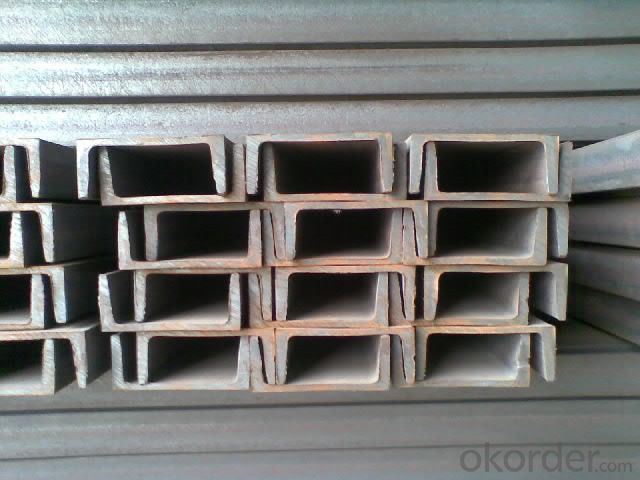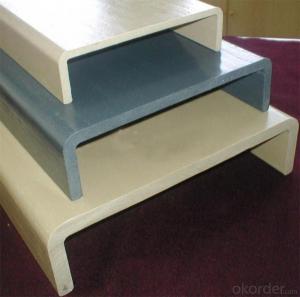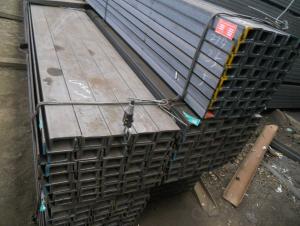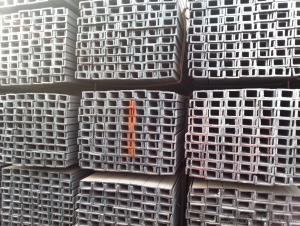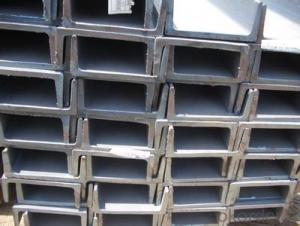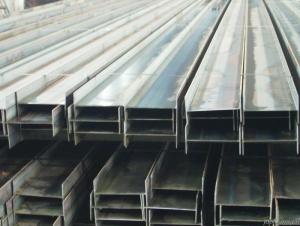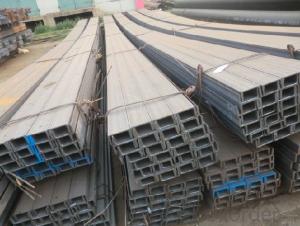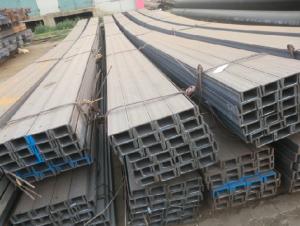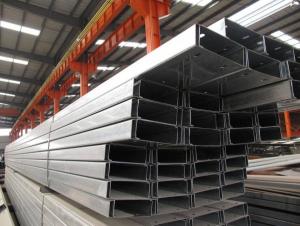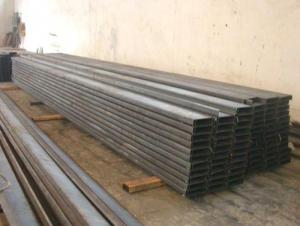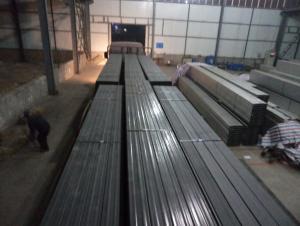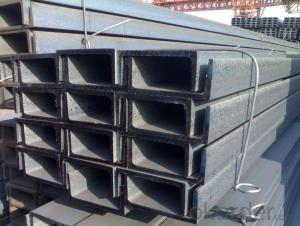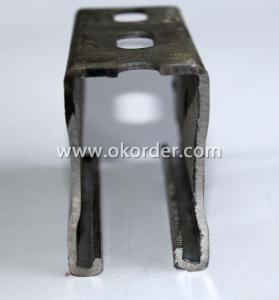JIS U CHANNEL ASTM A36 JIS G3192 GB Standard
- Loading Port:
- Shanghai
- Payment Terms:
- TT or LC
- Min Order Qty:
- 25 m.t.
- Supply Capability:
- 200000 m.t./month
OKorder Service Pledge
OKorder Financial Service
You Might Also Like
Product Description:
OKorder is offering JIS U CHANNEL ASTM A36 JIS G3192 GB Standard at great prices with worldwide shipping. Our supplier is a world-class manufacturer of steel, with our products utilized the world over. OKorder annually supplies products to European, North American and Asian markets. We provide quotations within 24 hours of receiving an inquiry and guarantee competitive prices.
Product Applications:
According to the needs of different structures, Angle can compose to different force support component, and also can be the connections between components. It is widely used in various building structures and engineering structures such as roof beams, bridges, transmission towers, hoisting machinery and transport machinery, ships, industrial furnaces, reaction tower, container frame and warehouse etc
Product Advantages:
OKorder's JIS U CHANNEL ASTM A36 JIS G3192 GB Standard are durable, strong, and resist corrosion.
Main Product Features:
· Premium quality
· Prompt delivery & seaworthy packing (30 days after receiving deposit)
· Corrosion resistance
· Can be recycled and reused
· Mill test certification
· Professional Service
· Competitive pricing
Product Specifications:
Manufacture: Hot rolled
Grade: Q195 – 235
Certificates: ISO, SGS, BV, CIQ
Length: 6m – 12m, as per customer request
Packaging: Export packing, nude packing, bundled
Sizes: 25mm-250mm | ||||||||||||
a*t | ||||||||||||
25*2.5-4.0 | 70*6.0-9.0 | 130*9.0-15 | ||||||||||
30*2.5-6.6 | 75*6.0-9.0 | 140*10-14 | ||||||||||
36*3.0-5.0 | 80*5.0-10 | 150*10-20 | ||||||||||
38*2.3-6.0 | 90*7.0-10 | 160*10-16 | ||||||||||
40*3.0-5.0 | 100*6.0-12 | 175*12-15 | ||||||||||
45*4.0-6.0 | 110*8.0-10 | 180*12-18 | ||||||||||
50*4.0-6.0 | 120*6.0-15 | 200*14-25 | ||||||||||
60*4.0-8.0 | 125*8.0-14 | 250*25 | ||||||||||
FAQ:
Q1: Why buy Materials & Equipment from OKorder.com?
A1: All products offered byOKorder.com are carefully selected from China's most reliable manufacturing enterprises. Through its ISO certifications, OKorder.com adheres to the highest standards and a commitment to supply chain safety and customer satisfaction.
Q2: How do we guarantee the quality of our products?
A2: We have established an advanced quality management system which conducts strict quality tests at every step, from raw materials to the final product. At the same time, we provide extensive follow-up service assurances as required.
Q3: How soon can we receive the product after purchase?
A3: Within three days of placing an order, we will begin production. The specific shipping date is dependent upon international and government factors, but is typically 7 to 10 workdays.
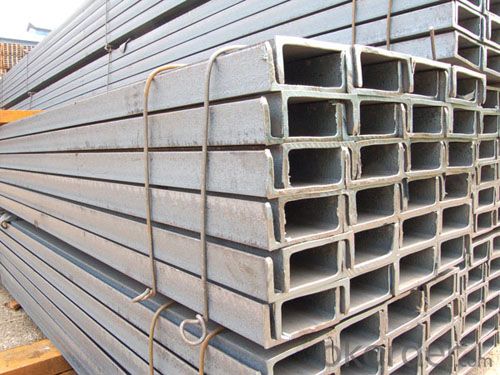
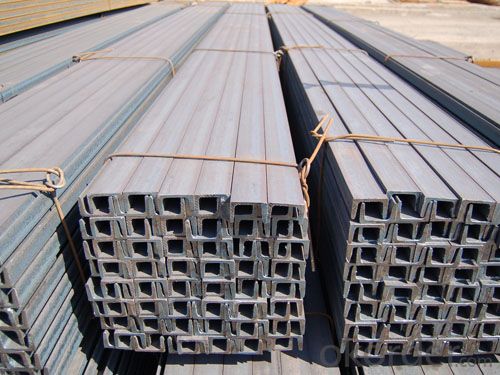
- Q: Steel arc bending machine can provide the best what? ` type details
- Is there a 3D molding requirement that will determine the number of NC shafts?.
- Q: Can steel channels be used for cable management?
- Yes, steel channels can be used for cable management. Steel channels are often used in industrial and commercial settings to organize and protect cables. They provide a durable and secure solution for managing cables by keeping them organized, preventing them from being damaged or tangled, and allowing for easy access and maintenance. Steel channels can be mounted on walls or ceilings and can accommodate various types and sizes of cables. They are particularly useful in environments where there is a need for heavy-duty cable management, such as data centers, manufacturing facilities, and construction sites.
- Q: What are the maintenance requirements for steel channels?
- The maintenance requirements for steel channels typically involve regular cleaning to remove dirt and debris, as well as preventing corrosion by applying protective coatings or paint. Additionally, regular inspections should be conducted to identify any signs of damage or wear, and necessary repairs or replacements should be made promptly.
- Q: Channel steel is a strip of steel with a cross section.
- Channel steel is a strip of steel with a cross section. The specifications of the method, such as 120*53*5, mean waist height of 120 mm, leg width of 53 mm channel, waist thickness of 5 mm channel, or called 12# channel. The same height of the channel, if there are several different leg width and waist thickness, also need to add a, B, C on the right side of the model to distinguish, such as 25a#, 25b#, 25c# and so on.
- Q: Can steel channels be welded or bolted together?
- Yes, steel channels can be welded or bolted together.
- Q: Are steel channels suitable for corrosive chemical environments?
- Steel channels are generally not suitable for corrosive chemical environments. While steel is known for its strength and durability, it is still susceptible to corrosion when exposed to certain chemicals. Corrosion occurs when the metal reacts with the surrounding environment, causing it to deteriorate over time. In corrosive chemical environments, where there are high levels of chemicals such as acids, bases, or salts, steel channels can quickly degrade. The corrosive chemicals can react with the steel, leading to rusting, pitting, or even complete failure of the channels. This can compromise the structural integrity of the channels and pose serious safety risks. To prevent corrosion in corrosive chemical environments, it is essential to consider alternative materials such as stainless steel or corrosion-resistant alloys. These materials have higher resistance to chemical corrosion and can withstand the harsh conditions better than regular steel. Additionally, protective coatings or linings can be applied to steel channels to provide an extra layer of protection against corrosion. Overall, steel channels are not recommended for use in corrosive chemical environments due to their susceptibility to corrosion. It is crucial to carefully assess the chemical environment and select materials that are specifically designed to withstand such conditions.
- Q: Are steel channels suitable for cold storage facilities?
- Yes, steel channels can be suitable for cold storage facilities. Steel channels are known for their strength and durability, making them ideal for supporting heavy loads and withstanding extreme temperatures. Cold storage facilities require materials that can withstand low temperatures without compromising their structural integrity, and steel channels are able to meet these requirements. Additionally, steel channels are resistant to corrosion, which is crucial in cold storage facilities where moisture and condensation can be present. Overall, steel channels offer the necessary strength, durability, and resistance to corrosion that make them a suitable choice for cold storage facilities.
- Q: 24 meters long, 4 meters per column, 6 meters wide. How large channel steel should be used to make the beam?
- Bending moment M = 1/4PL = 16100NmP=18400N=18.4kNThe safety factor is taken as 1, and if the other is taken, the carrying capacity P is correspondingly reduced.
- Q: Can steel channels be used in outdoor applications?
- Outdoor applications can indeed make use of steel channels. These channels are constructed from robust and enduring steel material, granting them the ability to withstand adverse weather conditions like rainfall, snowfall, and extreme temperatures. Due to their exceptional strength and capacity to bear hefty loads, they are frequently employed in open-air structures such as bridges, highways, and outdoor equipment. Moreover, steel channels can undergo treatment with protective coatings like galvanization or powder coating, thereby bolstering their resistance to corrosion and rust. Consequently, they are perfectly suitable for prolonged outdoor utilization.
- Q: Are steel channels suitable for the power generation manufacturing industry?
- Certainly, the power generation manufacturing industry finds steel channels to be highly appropriate. Steel channels are extensively employed in the production of power generation equipment, encompassing turbines, generators, and transformers. The remarkable strength and durability of steel render it an exceptional material for bearing substantial loads and enduring the frequently encountered high temperatures and pressures in power generation procedures. Moreover, steel channels can be conveniently fabricated and tailored to meet the precise design specifications of power generation equipment. They offer stability, structural soundness, and dependability, thereby positioning themselves as a fitting selection for the power generation manufacturing industry.
Send your message to us
JIS U CHANNEL ASTM A36 JIS G3192 GB Standard
- Loading Port:
- Shanghai
- Payment Terms:
- TT or LC
- Min Order Qty:
- 25 m.t.
- Supply Capability:
- 200000 m.t./month
OKorder Service Pledge
OKorder Financial Service
Similar products
Hot products
Hot Searches
Related keywords
